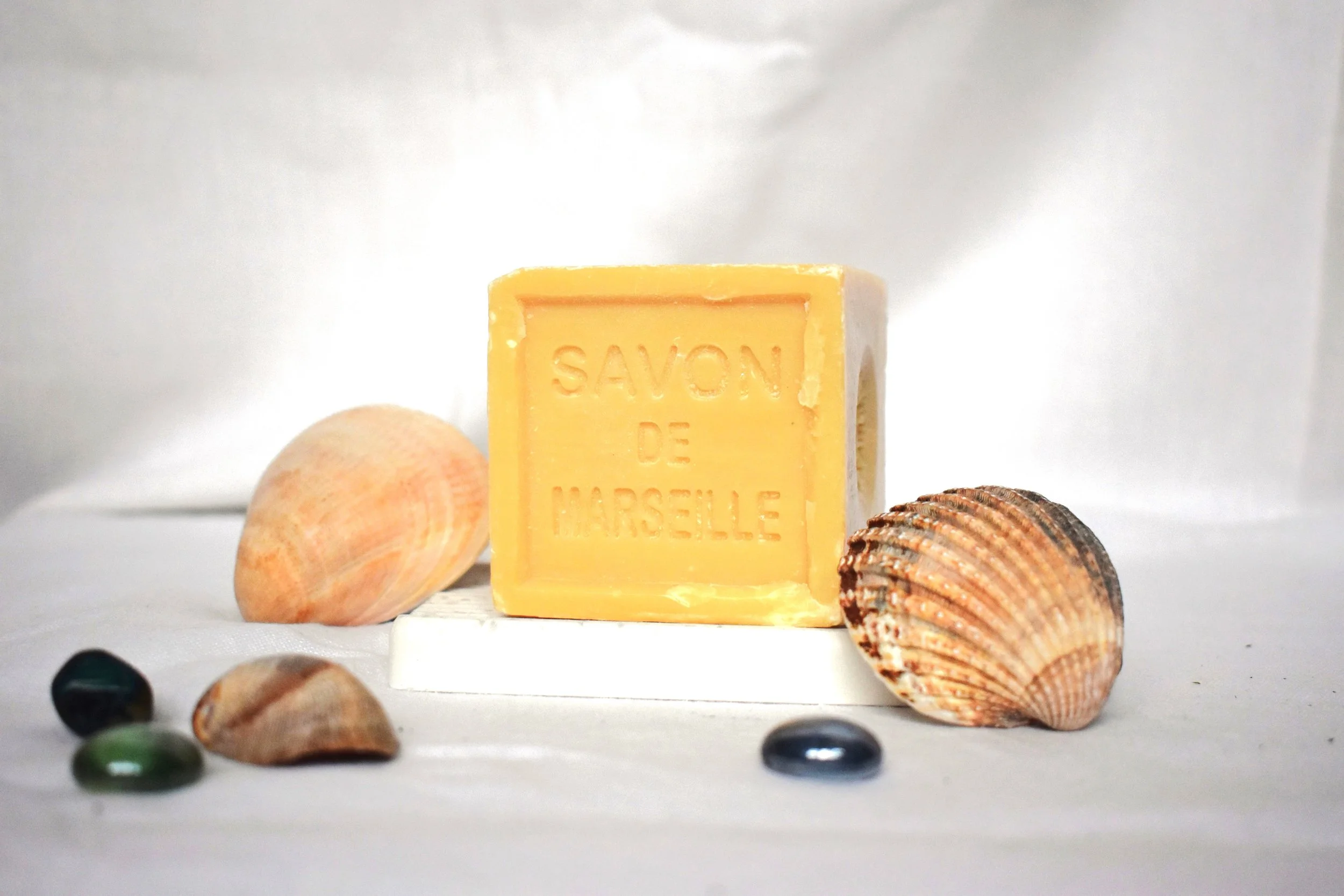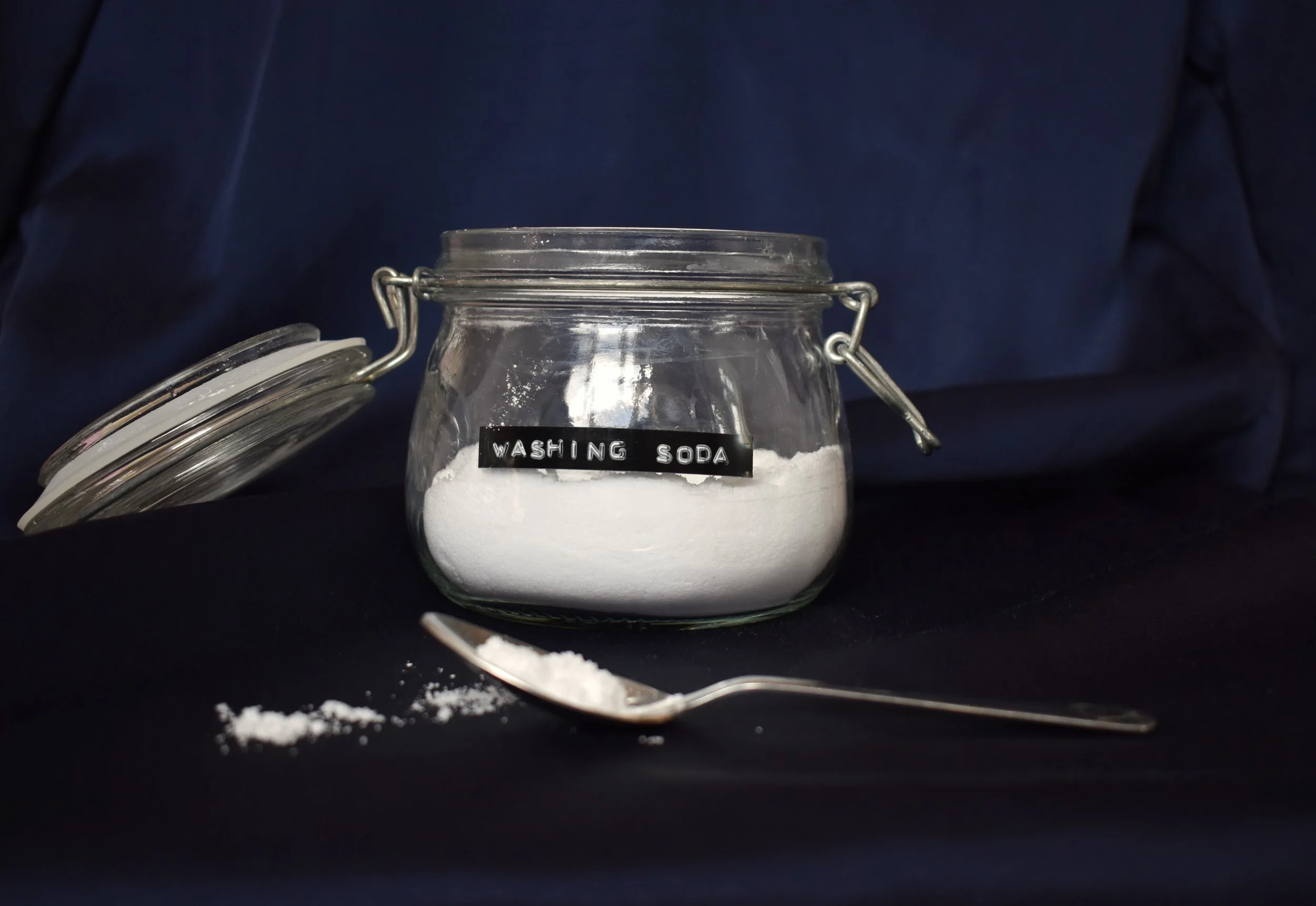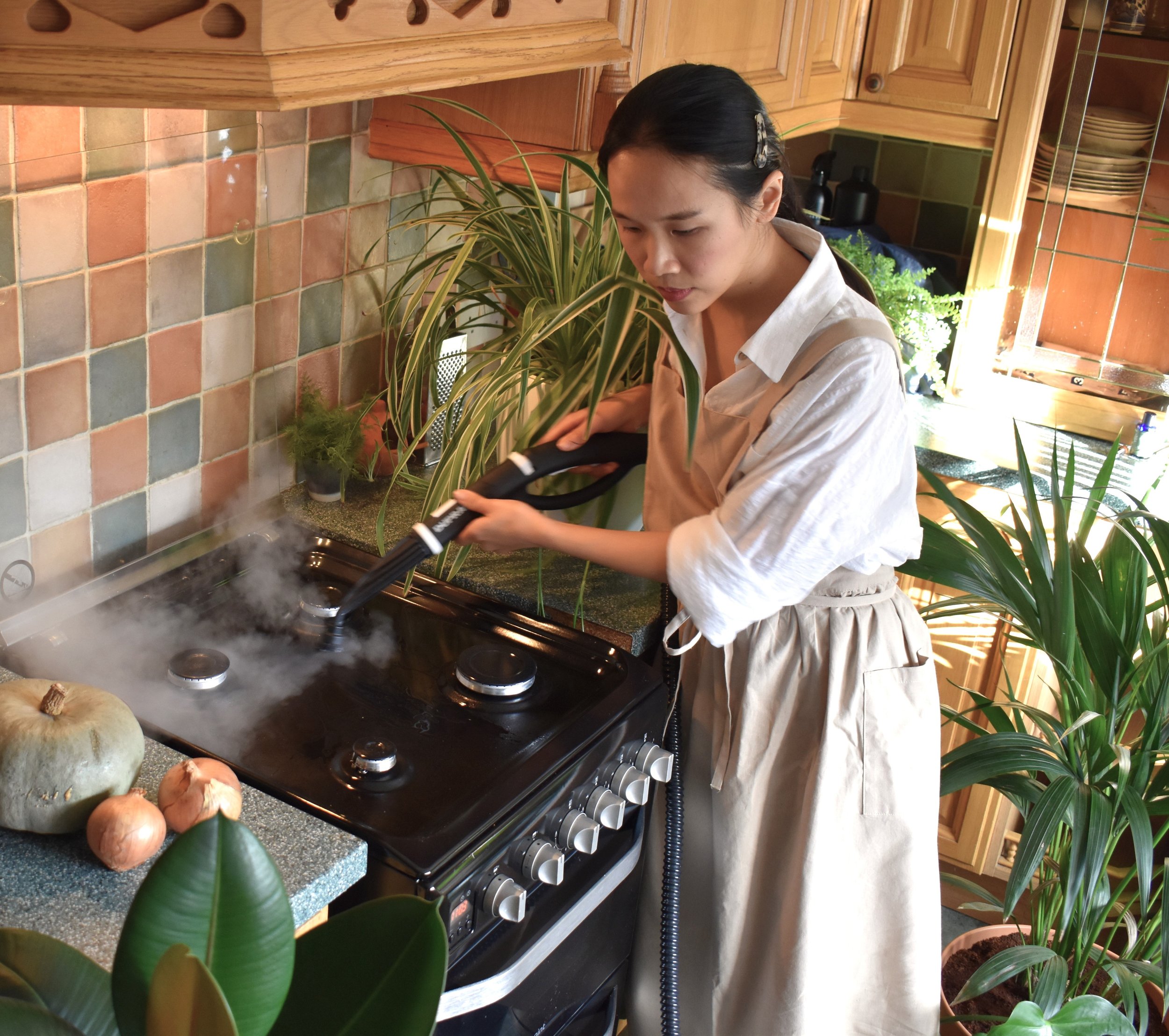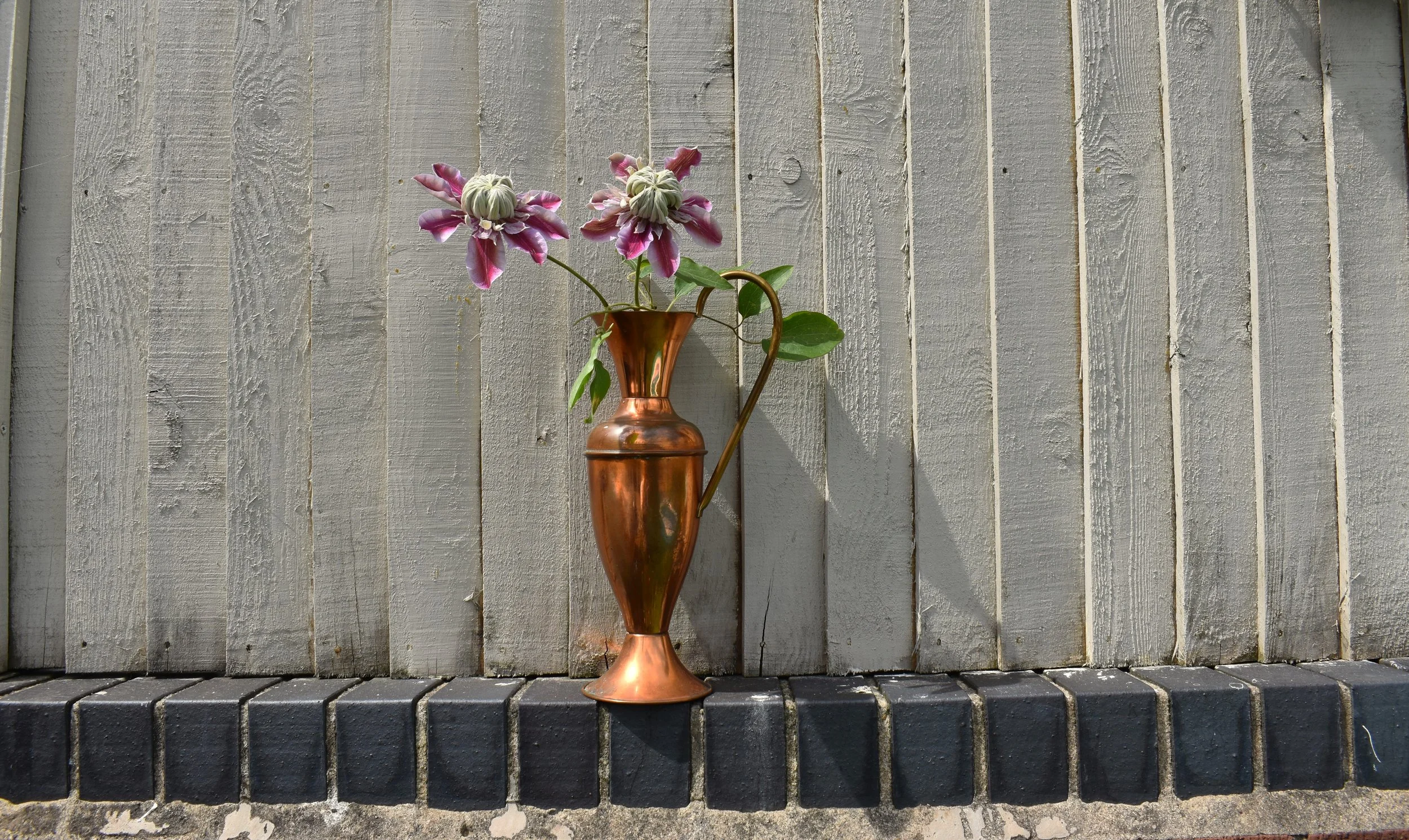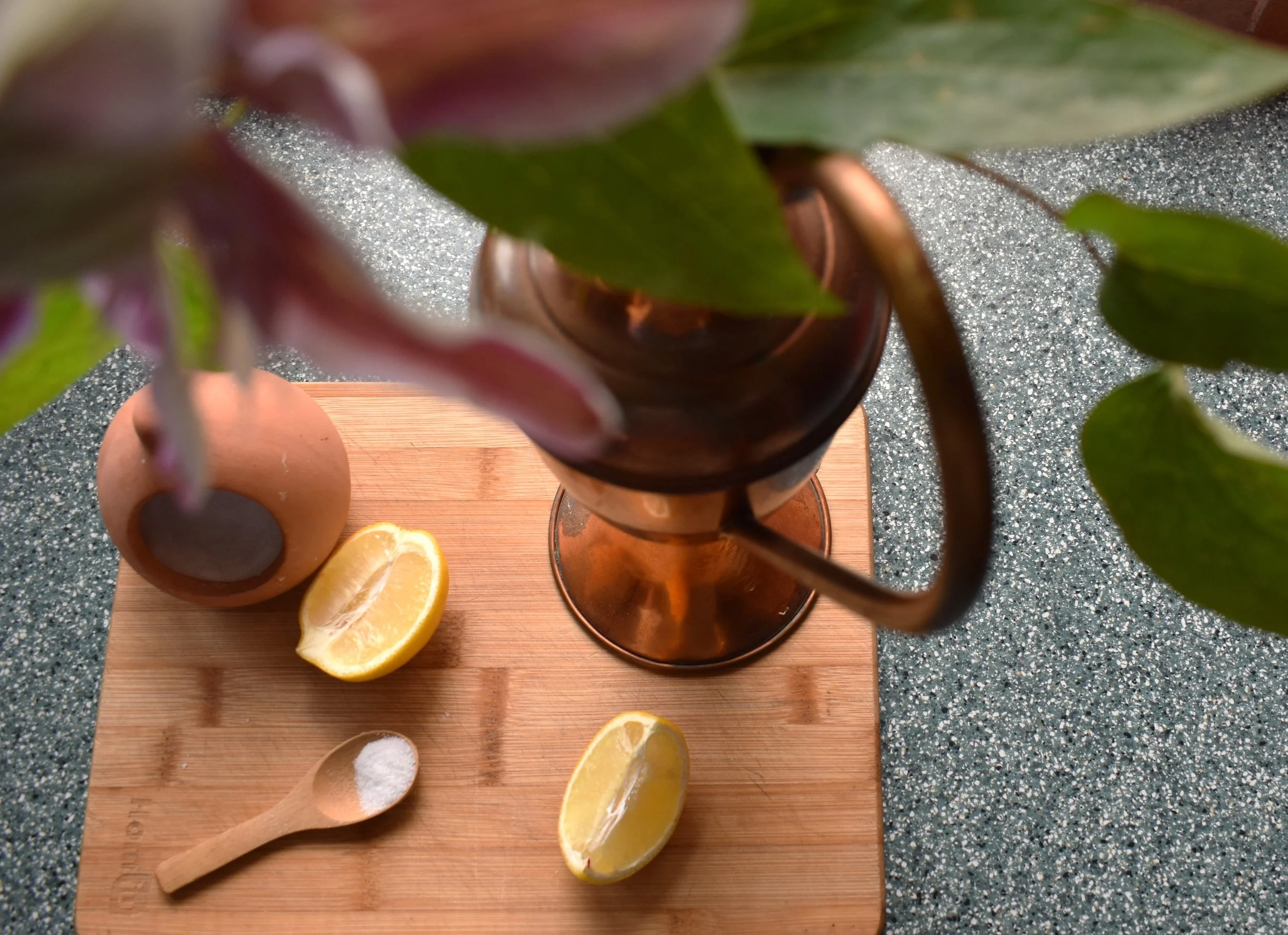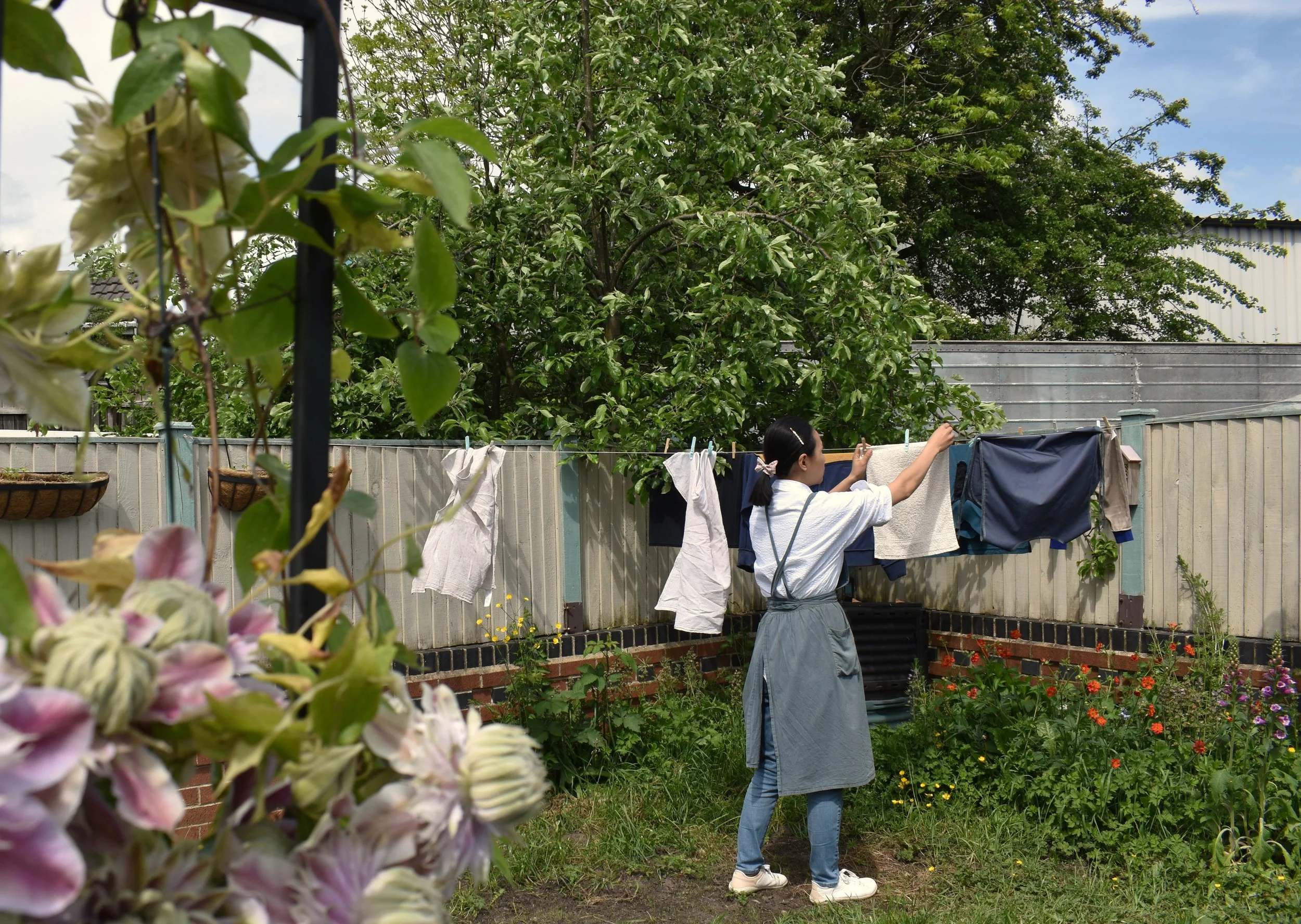Ingredient:
Soap bar or soap flakes or liquid soap.
Choose the soap that is made only with oil and alkali.
Laundry soap and castile soap are the good choices.
Formula
1 tbsp (3g) soap with 600 ml water.
How to make:
In a glass measuring jug, dissolve the grated bar soap or soap flakes with some hot water.(250ml-300ml should be enough). Then top up to 600ml with cold water. This way, you can transfer into your spray bottle straight away without buring yourself or melting the psray bottle (if you are using plastic ones).
Where to use:
Oily places like kitchen, tables, sink, bath tub.
Dusty places. (spay a bit on the cloth and wipe)
*If you use it on the glass, the glass might turn hazy because of hard water. You can fix this by wipe again with a dry cloth, or you can use our second cleaner— the acidic cleaner.
The General Cleaner
The general cleaner is the foudnation of the Soda&Soap’s way of cleaning. To be a good general cleaner, the solution must be able to clean oily dirt well, and soap fits the role.
Soap is a surfactant, which can combine oil and water. If you pay some attention to the conventional cleaners in the shops, you will soon notice that 99% of the bottles contain surfactants.
However, these surfactants are most likely to be the cheap, synthatic, powerful yet poisonous ones. We simply assume this by the price of the product and the advertisement on the product.
The most nature-friendly surfactant we can possibly use is made by nature — the saponins. These compounds can be found in soap nuts, hourse chest nuts, soap warts, yucca, beans and many other plants.
Saponins are milder than soap when it comes to clean oily dirt. For most of the people, soap is more practical. We have certainly cleaned a lot of stoves, oven, oily dishes and sinks. However, if your lifestyle uses less oil, you might be able to use only saponins. Hooray for you!
If you have really oily surfaces or you haven’t been cleaning for a long time, add a table spoon of washing soda (aka sodium carbonate) to the 600ml soap spray. The increased alkaline level will give you a hand.
The Acidic Cleaner
Ingredients
Soap nut liquid
5% White vinegar or citric acid
How to make soap nut liquitd:
in a clean pot, put 3-4 nuts and add 1.1 liter of water. Bring the water to boil. You should see lots of foam at this point, just like boiling pasta. Turn off the fire now and let the nuts soak.
When the water is not hot, use your fingers to rub the nuts. They should feel slippery!
Transfer the liquid to a clean bottle. Compost the nuts. When it is cold, store it in the fridge.
The liquid should look dark yellow.
Formula with 5% vinegar:
In a 600ml spray bottle, add the 5% vinegar to 300ml, then add 150-200ml soap nut liquid. Finally top up to 600ml with cold water. The solution should be light yellow.
Formula with citric acid:
In a 600ml spray bottle, add 150-200ml soap nut liquid, then add cold water to 600ml. Finally add one tea spoon of citric acid. the solution is light yellow, too.
The vinegar formula will smell like vinegar, so some people may not be able to accept. While the citric acid formula doesn’t smell bad, it irritates the respiratiory system a bit. Wear a mask if you need to.
After the alkaline general cleaner, here is the acidic companion.
Acids can clean water marks, urine stain, soap scum. It can also kill the mould to some extent.
So use it to clean the window, mirrors, toilet, shower panels, grouts. Also use it to polish the taps and descale the shower heads.
The Mould Cleaners
We use hydrogen peroxide, alcohol, vinegar and steam, depending on the surface.
What we noticed is that the sun and fresh air definitely play an important role in reducing the mould in your house.
We can clean the mould for you everytime we are there, but maintanance is the key to a mould-free house :)
The Steam
More correctly, a steam cleaner.
Because of the high temperature, dirt loosens up easily. At Soda&Soap it is used with sodium percarbonate in the greasy kitchen and spot cleaning the carpet. It is also used with vinegar on windows ,window tracks and mouldy grout. A steam cleaner really enhances the result and therefore when the cleaner observed the need for steaming, he/she will bring the steamer to clean.
To Polish the Copper
We had some opportunities to polish copper pots, and we settled on using lemon and sea salt together for their non-toxic nature
After the green parts are taken off by the lemon and salt, we use a layer of thing beeswax to prolong the shine.
Our experience was that the shine can last up to one month, and need to be polished again. Depite we need to polish copper often, we believe it is better for the environment.

